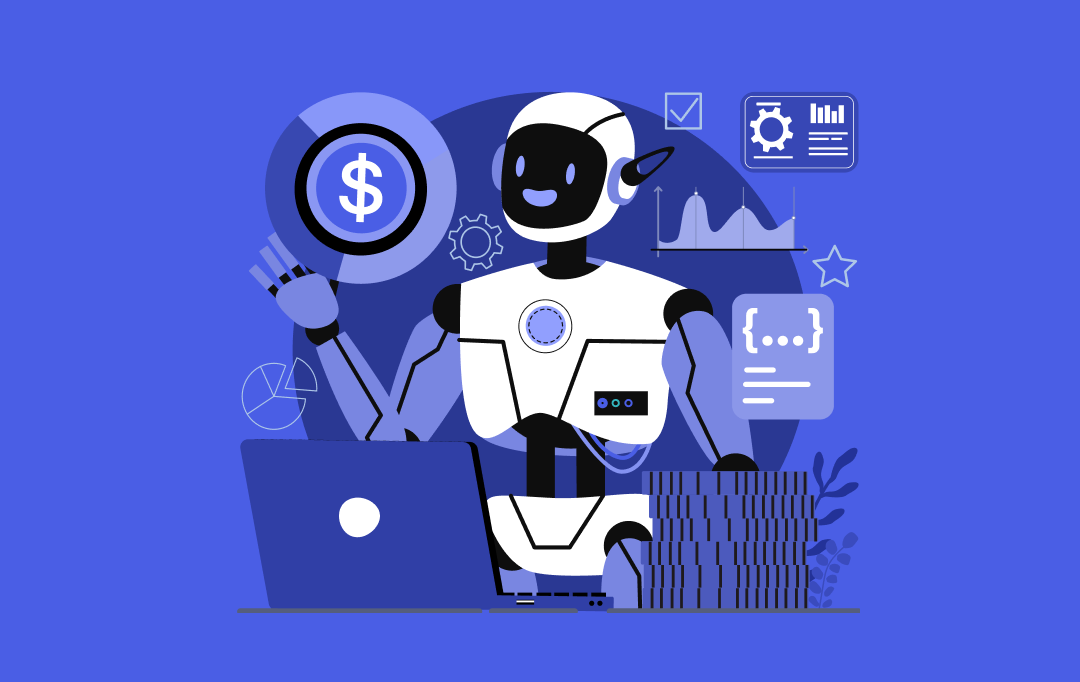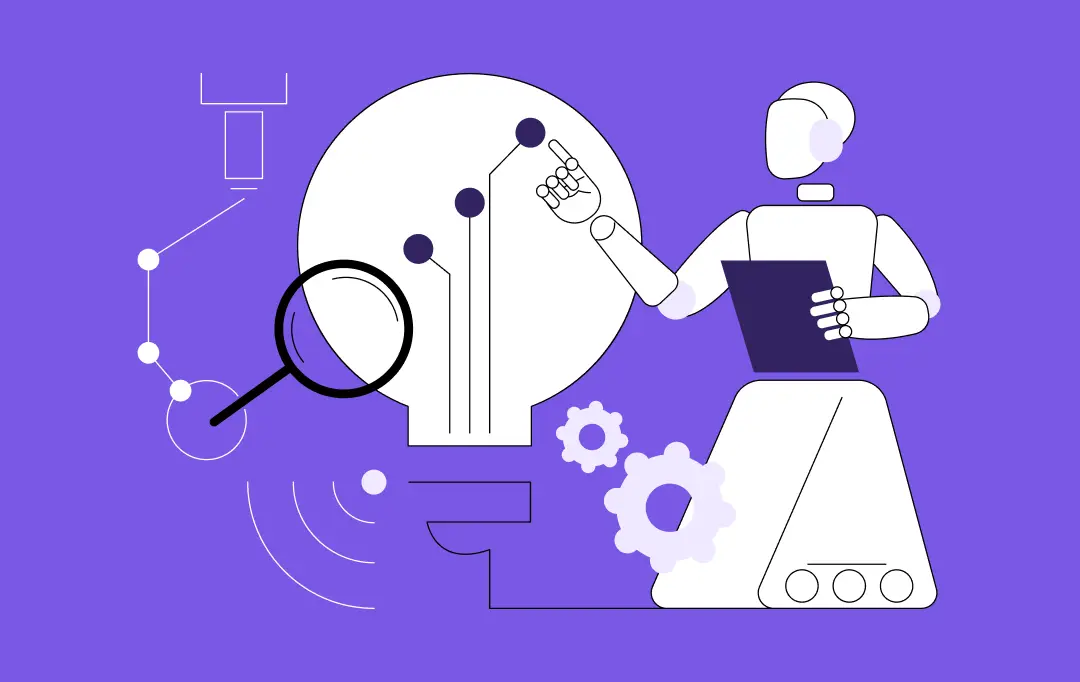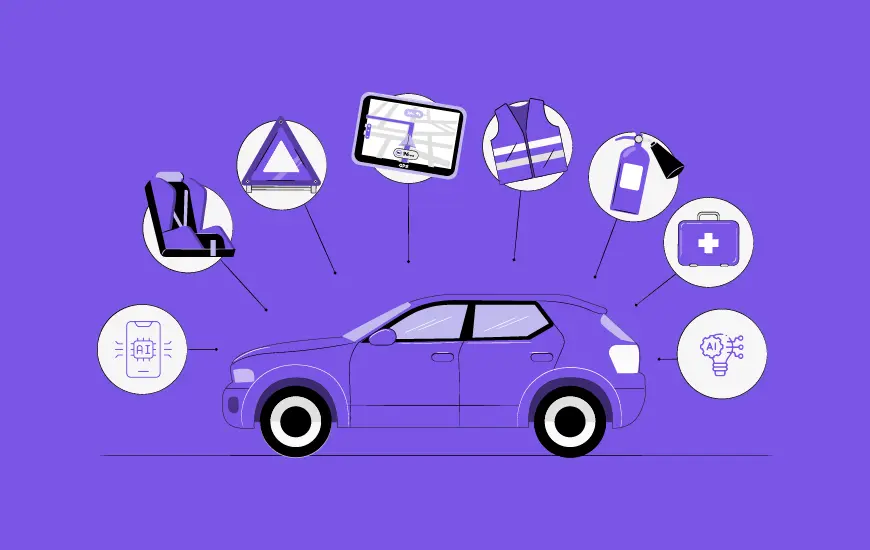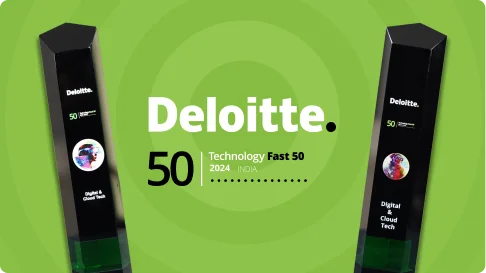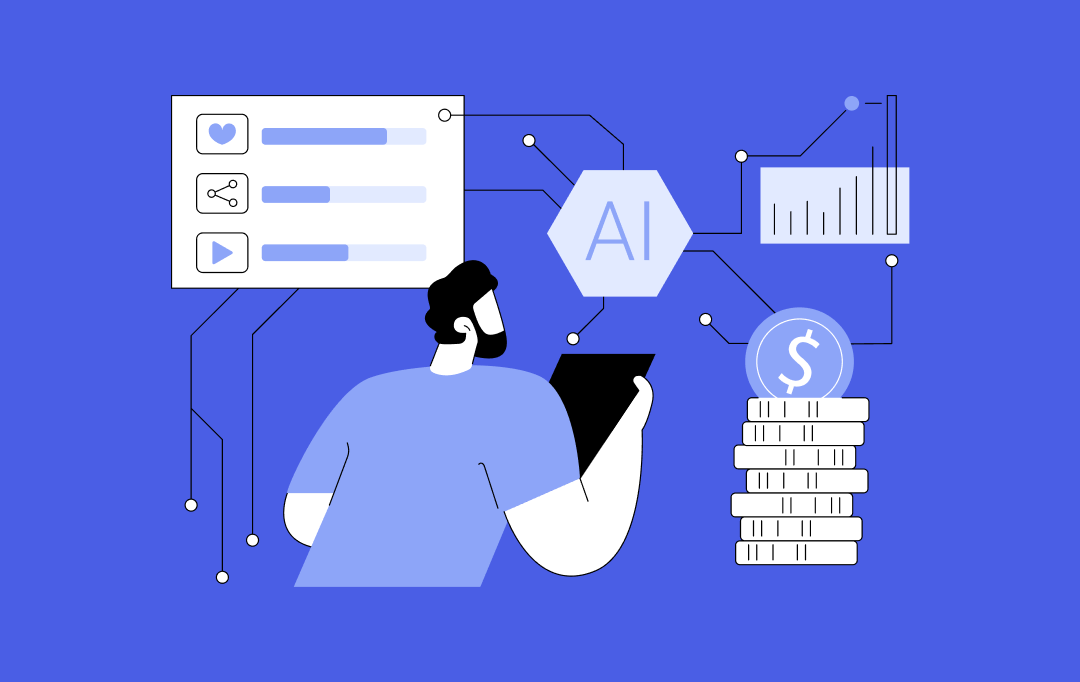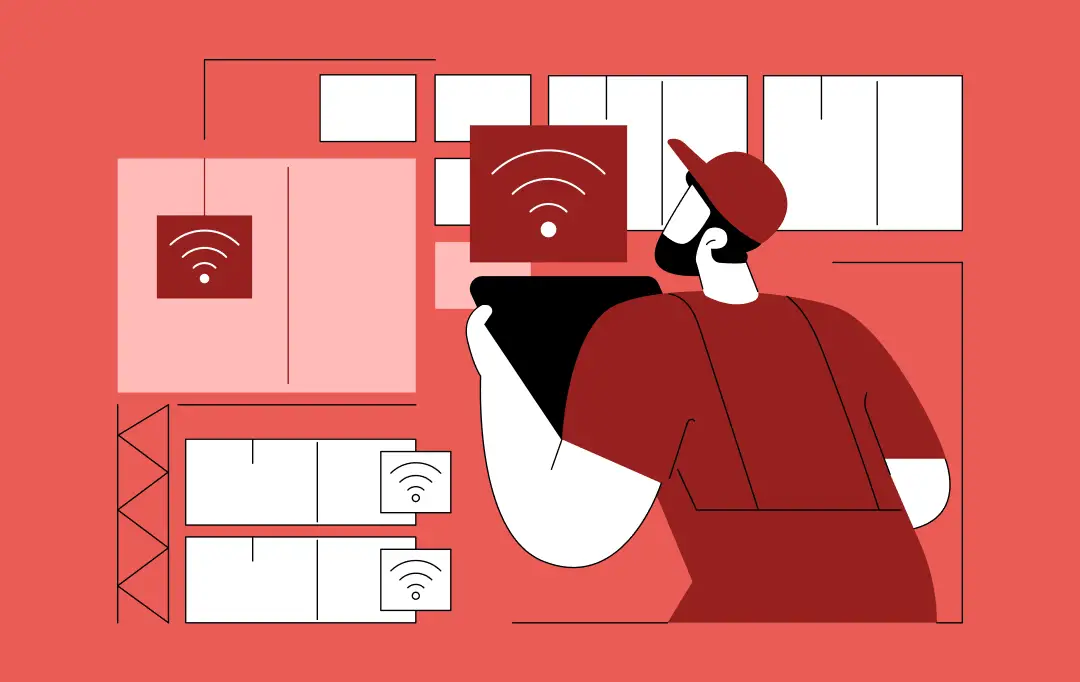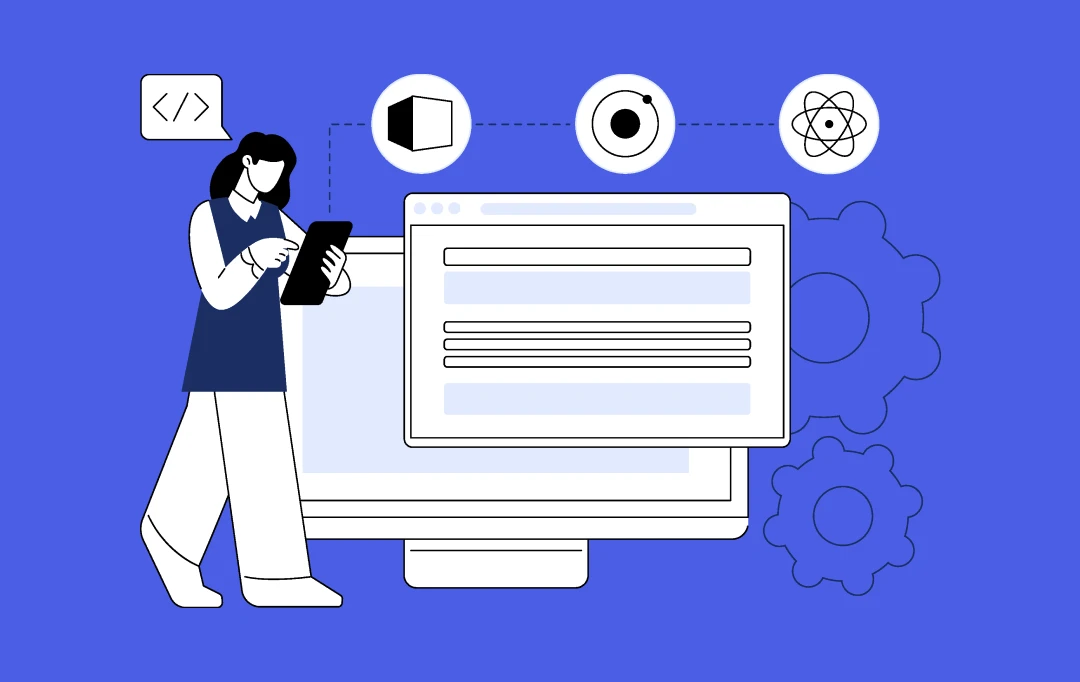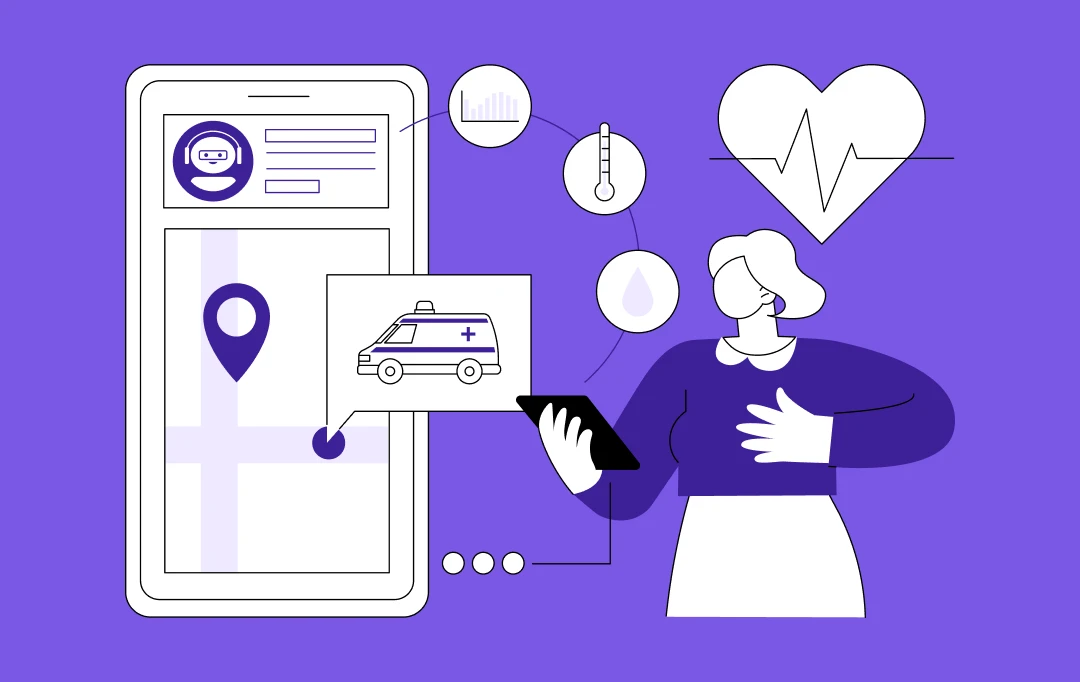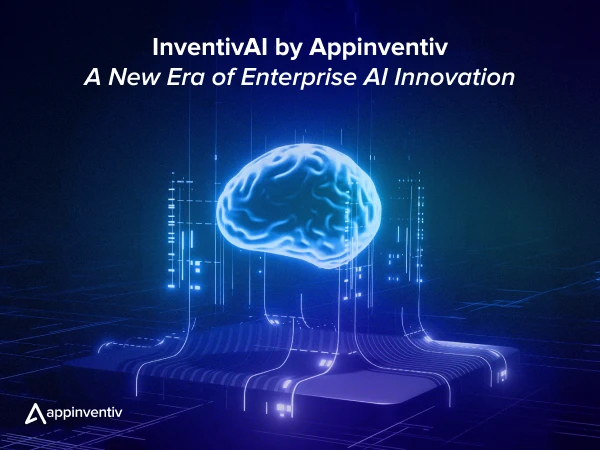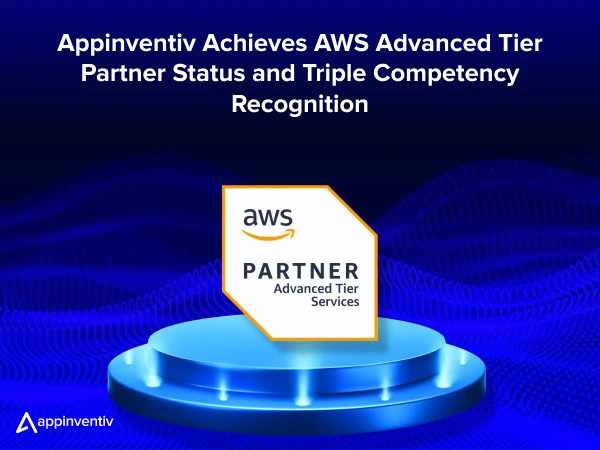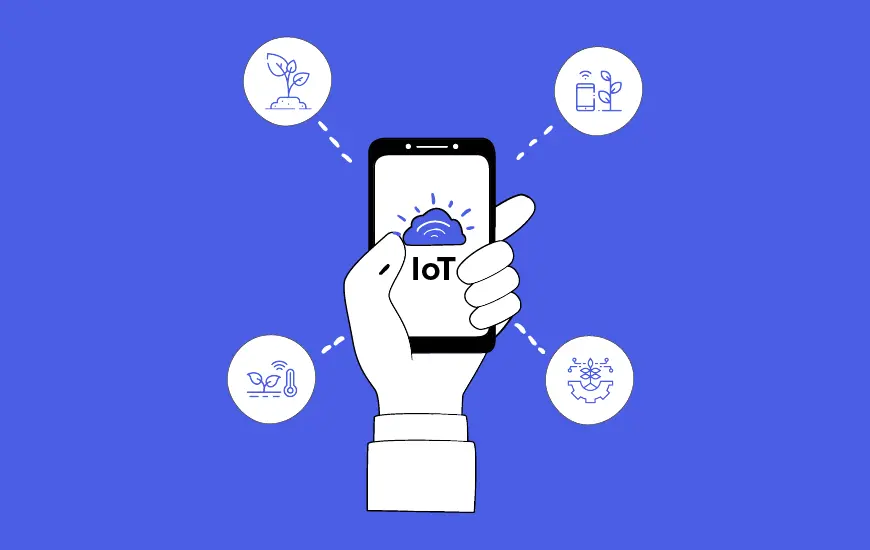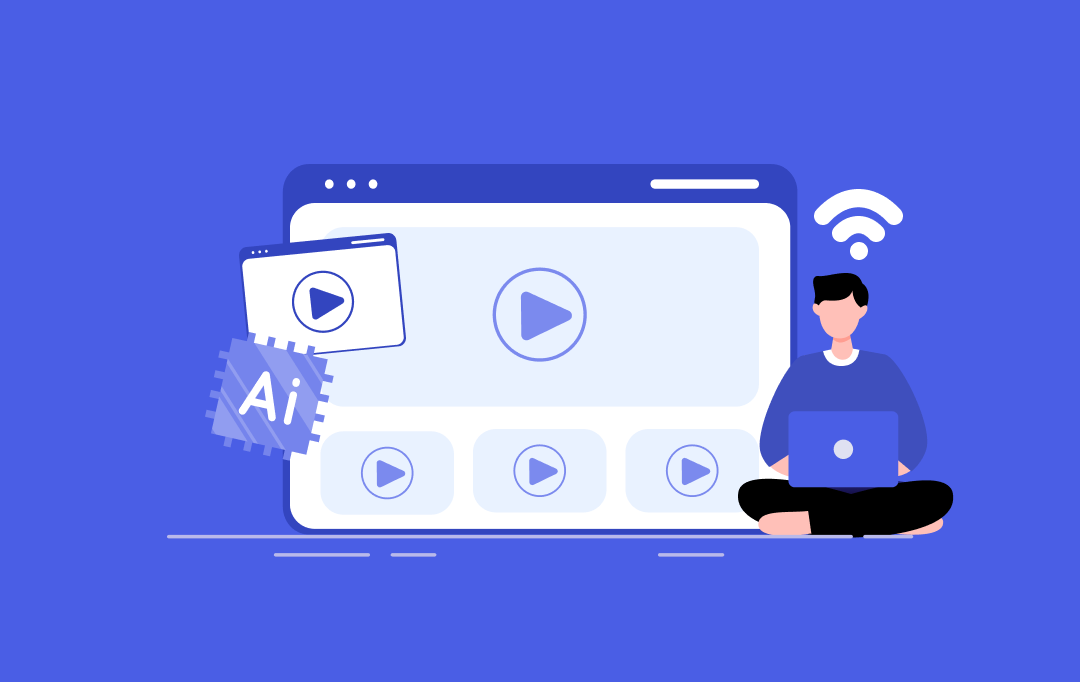- Market Insights & Analysis: Global OTT Platform Market (2025-30)
- 10 Ways in Which AI is Transforming OTT Streaming Platforms
- Smarter Content Discovery & Hyper-Personalization
- AI-Optimized Streaming & Bandwidth Efficiency
- Automated Content Moderation at Scale
- AI-Powered Dynamic Ad Insertion
- Predictive Analytics for Content Strategy
- Fraud Detection & Anti-Piracy AI
- AI-Generated Localization & Dubbing
- Voice & Conversational AI for OTT
- AI-Driven Live Streaming Enhancements
- AI for Interactive & Immersive Experiences
- Overcoming the Challenges of AI in Integrating with OTT Streaming Platforms
- Data Privacy
- Cost
- Scalability
- The Future of AI in OTT (2025 & Beyond)
- Biometric-Driven Personalization
- AI-Generated Trailers & Summaries
- AI Avatars for Virtual Watch Parties
- Why Choose Appinventiv for AI-Powered OTT Solutions?
- FAQs
OTT streaming platforms are revolutionizing how folks watch content, and artificial intelligence in OTT platforms is a driver behind this transformation. Global OTT subscriptions are expected to reach 1.7 billion by 2027; good content is no longer enough in such a crowded space. How smartly that content is tailored and delivered to each viewer counts.
The merger of AI and OTT platforms does exactly that. From recommending shows you never thought you’d enjoy to slipping in ads that don’t ruin your vibe, AI is woven into how top streaming platforms work. Companies like Netflix, Disney+, and others already use AI to improve user engagement, increase ad revenue, and handle large-scale content delivery more efficiently.
This isn’t just relevant to big names. Whether you’re just starting or running a streaming platform, AI applications in OTT can help you hold on to users, generate more revenue, and reduce manual effort. The platforms that apply AI well aren’t just getting by—they’re doing better on every front.
Market Insights & Analysis: Global OTT Platform Market (2025-30)
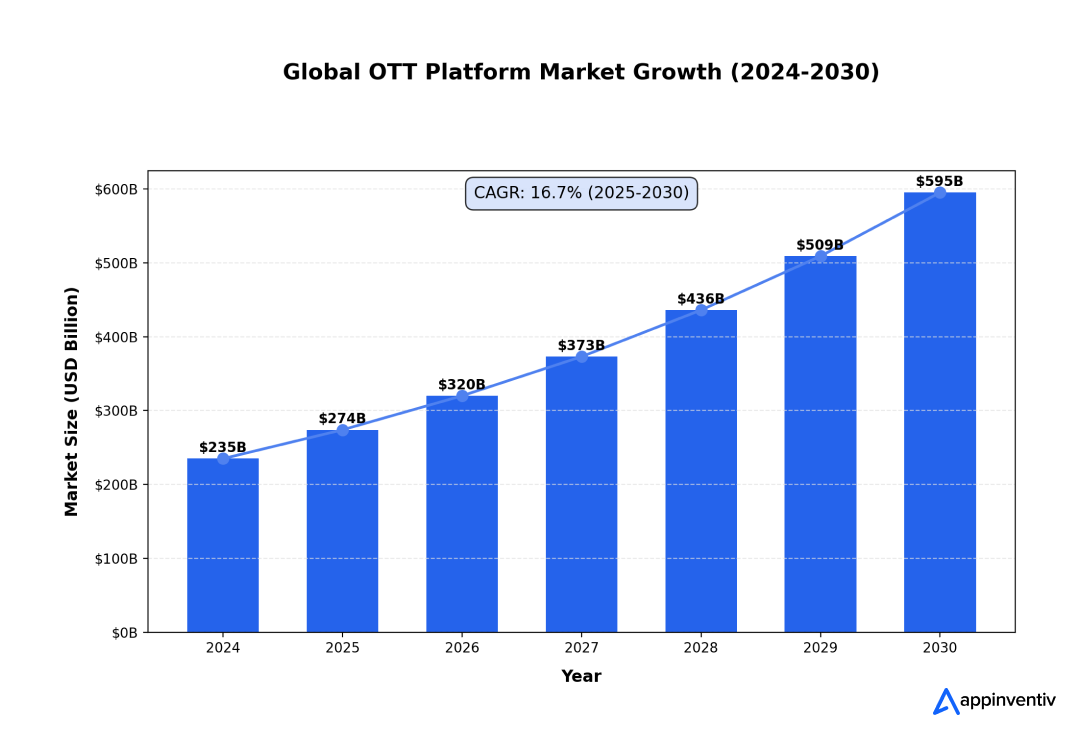
The Global OTT Platform Market size was valued at around USD 235 billion in 2024 and is projected to reach USD 595 billion by 2030. The market is also estimated to grow at a CAGR of around 16.7% during the forecast period, i.e., 2025-30.
This blog will examine 10 powerful ways AI transforms OTT streaming platforms and how those changes can benefit your business.
From smarter content recommendations to real-time streaming enhancements, we help you build experiences viewers won’t forget. Let’s make smarter streaming together.
10 Ways in Which AI is Transforming OTT Streaming Platforms
AI is racing through the world of OTT streaming platforms like a supercharged train, changing how we watch, relax, and enjoy our entertainment. From amazing personalization to improved efficiency, AI is changing the rules for how streaming giants keep us watching. AI applications in OTT have flipped the script. Here are 10 surprising ways AI is changing the OTT game.
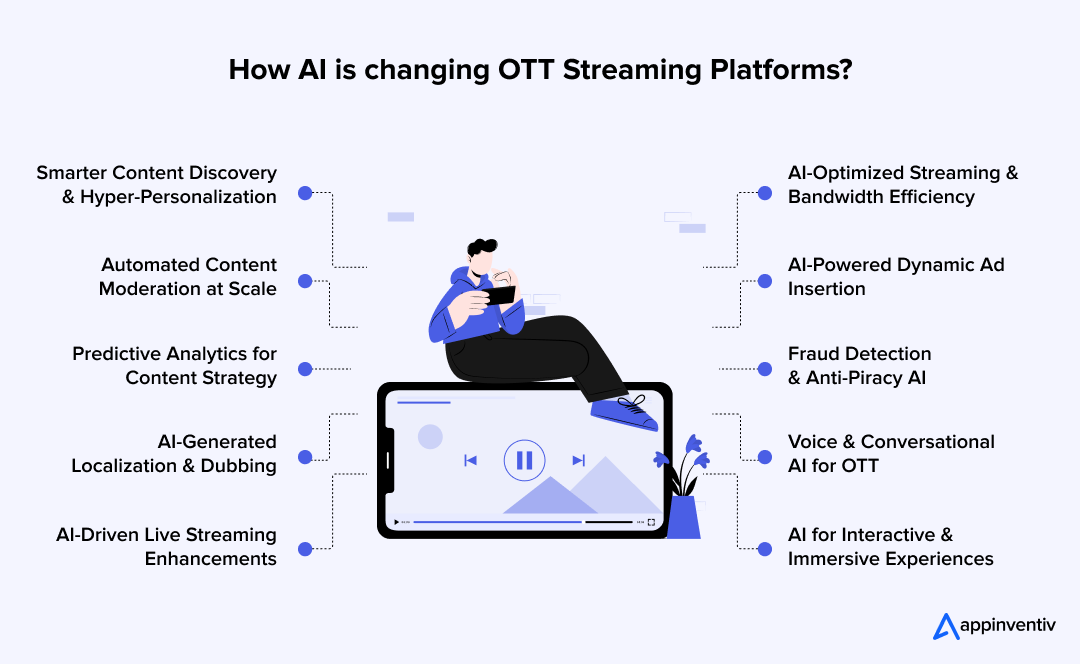
Smarter Content Discovery & Hyper-Personalization
Have you ever closed a streaming app simply because nothing felt worth watching? You’re not alone. Frustration over irrelevant content is one of the biggest reasons users abandon a platform. With the OTT market crowded with choices, content discovery isn’t just important anymore—it’s critical. This is where AI steps in. Artificial intelligence in OTT platforms goes far beyond random suggestions by using deep learning to analyze viewing habits, emotional states, and contextual cues like the time of day.
AI in OTT streaming platforms helps solve this by analyzing user behavior, moods, and even time-of-day viewing preferences.
Bonus Read [A Comprehensive Guide To Custom OTT Development: Market, Features and Cost]
Real Example: Netflix
Netflix is a clear example of how AI works for OTT platforms. As of 2024, the company reported that AI-powered recommendations drive 80% of what users watch. That level of precision isn’t luck—it’s the result of years of smart, data-backed personalization.
The level of personalization offered by the brand to the video streaming app Netflix has enhanced the OTT streaming experience for the users, increased watch time, and reduced churn, demonstrating a clear benefit of AI for OTT streaming platforms. Today’s leading OTT platforms even use real-time personalization that adapts instantly to user behavior.
The result? A streaming experience that feels made just for each user, driving retention and building long-term loyalty.
AI-Optimized Streaming & Bandwidth Efficiency
Buffering, lag, and pixelated streams are more than annoyances— deal-breakers. Poor playback quality often results in users quitting the app entirely, which means lost engagement and higher churn.
Artificial intelligence for the OTT industry solves this with adaptive bitrate streaming, which adjusts real-time video quality based on the viewer’s internet speed. This ensures smooth playback, even on unstable connections. There are no manual settings, no interruptions—just seamless viewing.
AI also enhances the performance of the Content Delivery Network (CDN). By analyzing real-time traffic and server loads, AI selects the fastest, most efficient delivery route for video content. The result: faster load times, minimal latency, and buffer-free streams. This shows how AI is powering the OTT streaming experiences users expect—reliable, seamless, and high-quality. Thus, flawless video delivery isn’t a luxury; it’s a must, and AI makes it possible.
Real Example: AWS
The impact on business is significant. An AWS case study found that AI-powered streaming optimizations can reduce churn by up to 30%. For OTT platforms, that means better retention, improved user satisfaction, and a stronger competitive edge.
Automated Content Moderation at Scale
With millions of hours of new video uploaded daily, content moderation has become a major challenge for OTT platforms. The issue isn’t just volume—it’s speed. Harmful content, whether violent, explicit, or hateful, can spread faster than any human team can react.
This is where AI applications in OTT change the game. Powered by computer vision and natural language processing (NLP), AI can scan videos, images, audio, and subtitles in real time, instantly identifying and flagging policy-violating content—even before it’s widely seen. Unlike human moderators, AI works 24/7 without fatigue, scaling effortlessly across thousands of files per second.
Real Example: YouTube
A great case study of AI in OTT platforms is YouTube, where AI handles more than 90% of content flagging automatically.
Beyond speed, AI also brings cost-efficiency. Studies show that AI-driven moderation can reduce operational costs by up to 50% compared to human-only workflows. AI for OTT platforms means a safer user environment, stronger trust with advertisers, and a streamlined moderation process that can grow with the platform.
AI-Powered Dynamic Ad Insertion
Generic ads are a surefire way to lose an audience’s interest. Nobody watches a car ad while binge-watching a cooking show. Irrelevant advertisements intrude, disrupt a person’s viewing experience, and push users into turning away. Streaming platforms have dynamically changed the game of ad insertion by using AI in OTT streaming platforms.
AI ad tech uses user behavioral parameters, viewing habits, demographic information, and context at the moment (the type of content being viewed). It analyses the content to deliver hyper-relevant ads to users. For example, one watching a travel documentary can expect advertisements for travel bags or vacation deals. Those binge-watching a fitness series will expect a barrage of ads about workout accessories or health apps. Such personalization in real-time lends more meaning to ads and makes them resonate with people as more valuable recommendations than interruptions.
AI not only places the ads but also optimizes them for maximum impact. Using AI in OTT streaming platforms results in a more seamless user viewing experience and a revenue stream that works more brilliantly and is less challenging. In the battle for attention, AI-driven ad tech gives platforms the needed edge.
Real-Example: Hulu
This popular streaming service has effectively implemented this technology to enhance its advertising strategy. Hulu uses AI-driven ad insertion to deliver highly personalized and contextually relevant advertisements to its viewers. For instance, when users watch a fitness-focused series like The Biggest Loser, they might see ads for workout gear from brands like Nike or fitness apps like MyFitnessPal.
Predictive Analytics for Content Strategy
Licensing the wrong content can be costly, draining budgets and delivering little return. In a competitive OTT space, guessing what viewers might like is a risk few platforms can afford. One underperforming title can derail entire content strategies.
The future of AI in OTT streaming experiences is AI-powered predictive analytics that helps eliminate the guesswork. By analyzing massive datasets—including viewing behavior, social media trends, search activity, and regional preferences—AI can forecast content demand before making any licensing decision. This shifts content acquisition from a gamble to a data-informed strategy.
Real Example: Disney+
Disney+ offers a strong case study of AI in OTT platforms. By leveraging viewer data and predictive insights, they strategically developed series like WandaVision, which launched successfully and became a fan favorite. These outcomes weren’t based on luck—they resulted from pattern recognition that AI excels at, identifying what characters, storylines, or genres resonate most. These Benefits of AI for OTT streaming platforms highlight the precision and ROI boost AI brings to strategic content decisions.
With smarter forecasting, platforms can consistently deliver what audiences want, maximizing viewer retention and profitability. Using AI in OTT streaming platforms doesn’t just support content strategy; it transforms it into a competitive advantage.
Bonus Read: How Much Does Video Streaming App Like Disney+ Development Cost?
Fraud Detection & Anti-Piracy AI
Piracy and account sharing remain major threats to OTT revenues. While subscriber numbers may look healthy, billions are lost annually to users who access content without paying through illegal streams or shared login credentials.
AI is now playing a critical role in countering this. Behavioral biometrics can detect unusual activity by analyzing user interactions such as mouse movements, typing patterns, and swipe behavior. Suspicious patterns often indicate account sharing or compromised logins, triggering real-time security measures.
AI-powered digital watermarking embeds invisible markers within video content. These identifiers can trace leaks back to their source, enabling platforms to take swift action against unauthorized distribution.
Real Example: Netflix Crackdown on Account Sharing
Netflix’s crackdown on account sharing, supported by AI systems, reported $9.37 billion in revenue for the first quarter. This proves that artificial intelligence for the OTT industry is not just about experience; it’s also about protecting the business model.” If the data has changed. Please interlink the latest resource.
With Digital Rights Management (DRM) and advanced fraud detection systems, AI offers a layered defense against piracy. It allows platforms to protect content, reduce freeloading, and ensure that legitimate viewers receive uninterrupted access.
Using AI in OTT streaming platforms is no longer just about security, but also about protecting the business model. With AI in place, every view counts, and every dollar stays where it belongs.
AI-Generated Localization & Dubbing
Traditional dubbing has long been content localization’s most time-consuming and expensive part. Voice actors, studio time, multiple takes, and post-production edits can take weeks or even months, often with inconsistent results in tone and delivery.
AI OTT Streaming Platforms Development is changing that completely. Advanced text-to-speech apps like Speechify and deepfake voice cloning technologies allow AI and OTT platforms to generate high-quality multilingual dubs in hours. These AI-generated voices capture natural intonation, emotional nuance, and regional accents, making them nearly indistinguishable from native speakers behind a microphone.
Real Example: Synthesia
Companies like Synthesia report that their AI dubbing solutions can reduce localization costs significantly while dramatically shortening time to market. AI and OTT platforms aim for global reach, and this is more than a cost-saving measure—it’s a strategic advantage. This is one of the biggest benefits of AI for OTT streaming platforms looking to scale internationally.
Using AI-powered localization, platforms can scale content across markets quickly and affordably—from Hollywood to Bollywood, Seoul to Paris—without compromising quality.
Voice & Conversational AI for OTT
Search behavior on OTT platforms has shifted. Viewers no longer want to type rigid queries like “action movies with explosions.” Instead, they expect natural, conversational interactions—asking for “something like Breaking Bad, but shorter,” and getting relevant results instantly.
AI-powered voice search makes this possible. It interprets vague, natural-language requests and translates them into accurate, personalized suggestions. This conversational AI adoption by entrepreneurs eliminates the friction of traditional searching and creates a smoother, faster discovery experience.
Real Example: Roku
Roku’s adoption of AI-driven voice search is a strong case in point. Within just one year of integration, the platform saw a 40% increase in user engagement in 2023. When content discovery becomes effortless, users stay longer and interact more.
Voice-enabled search enhances user satisfaction, reduces friction, and increases time spent on the app. These improvements directly translate into higher loyalty and stronger competitive positioning in a saturated market. This demonstrates how AI is used in OTT platforms to improve performance and viewer satisfaction.
AI-Driven Live Streaming Enhancements
Live streaming—whether sports, concerts, or breaking news—comes with high expectations and little room for error. Viewers demand a seamless, high-quality experience, and issues like buffering, lag, or pixelated feeds can quickly lead to frustration and drop-offs.
AI is now central to solving these challenges. Features like real-time upscaling, predictive buffering, and adaptive bitrate streaming allow platforms to optimize video quality automatically, even under unstable network conditions. The result is smoother playback and a consistently sharp, broadcast-grade viewing experience.
Real Example: Twitch
By leveraging AI, Twitch achieved a major reduction in latency, keeping millions of live viewers in sync without delays. This optimization level for AI in OTT platforms means fewer technical issues, better viewer satisfaction, and stronger retention during live broadcasts.
AI for Interactive & Immersive Experiences
Passive viewership is fading. Today’s audiences want more than just content—they want to participate, shape the story, and feel immersed in the experience. AI-powered interactive storytelling makes that possible.
Real-Example: Netflix’s Bandersnatch
Platforms like Netflix have already explored this with titles like Bandersnatch, where viewers actively choose how the story unfolds. A significant increase in engagement compared to traditional content, proving that interactivity isn’t just a novelty, but a powerful engagement tool.”
AI enables branching narratives and personalized storylines and even integrates upcoming AR/VR trends, creating immersive experiences that adapt to each viewer. This sets the stage for the future of AI in OTT streaming experiences, where engagement becomes immersive and dynamic.
For streaming platforms, this shift means higher retention, deeper engagement, and more time spent on content.
Overcoming the Challenges of AI in Integrating with OTT Streaming Platforms
Various AI integration examples demonstrate how leading enterprises transform operations, while integrating AI in OTT platforms has a few hiccups. Understanding these hurdles is key to deploying AI effectively and responsibly. Here are a few key challenges of AI in integrating with OTT streaming platforms:
Data Privacy
User trust hinges on how well platforms protect personal data. OTT providers must comply with regulations like GDPR and CCPA, and be transparent about what data is collected and how it’s used. Clear communication and consent mechanisms are essential to maintaining user confidence.
Cost
Developing and training AI models for custom OTT solutions demands substantial investments in infrastructure and specialized talent. Platforms can start with high-impact use cases for cost-effective adoption and consider pre-built AI solutions instead of developing from scratch. This approach helps control costs and shortens time to market.
Scalability
AI systems must scale to serve millions of users in real time without performance issues. Partnering with cloud providers ensures access to robust, scalable infrastructure that supports seamless AI deployment—even during peak traffic hours.
AI in OTT platforms can confidently embrace and unlock its full potential by proactively addressing these challenges.
The Future of AI in OTT (2025 & Beyond)
The role of AI in the OTT industry is only just beginning. Here’s a look at what lies ahead:
Biometric-Driven Personalization
Future platforms may adjust real-time programs based on biometric signals like facial expressions or heart rate, delivering hyper-personalized viewing experiences.
AI-Generated Trailers & Summaries
Instead of one-size-fits-all previews, generative AI for businesses will craft personalized trailers and episode summaries tailored to individual viewer preferences, increasing engagement and click-through rates.
AI Avatars for Virtual Watch Parties
Virtual viewing will become more immersive, with AI avatars enabling shared, 3D watch party experiences that blend entertainment with social interaction.
Why Choose Appinventiv for AI-Powered OTT Solutions?
At Appinventiv, we don’t just follow trends—we shape them. Our AI-powered OTT Application Development services are built to maximize user engagement, reduce churn, and future-proof your platform.
- Proven Expertise
With 1,500+ digital products delivered, we bring deep domain knowledge and advanced technical skills to every project. - Bespoke AI Integration: No Plug-and-Play Mediocrity
From personalized recommendation engines to real-time OTT analytics for businesses and smart monetization systems, we deliver full-scale AI integration, tailored to your business needs. - Built to Scale, Not Just for Today, But for the Next Decade
Our cloud-native solutions are designed to grow with your platform and adapt to evolving viewer expectations. Our team builds custom AI development services that align with your content goals, viewer behaviors, and business model.
Ready to transform your OTT platform with AI?
Let’s build the future of streaming—Contact us today to get started.
FAQs
Q. How is the improvement in OTT content recommendation achieved through AI?
A. AI analyzes user behavior, such as watch history, preferences, time of day, and engagement patterns, to suggest content that matches individual tastes. This isn’t guesswork; deep learning algorithms power it. For example, Netflix reports that a growing number of its watched content comes from AI-driven recommendations, increasing viewer retention significantly.
Q. Can it reduce the buffering issues of an online streaming platform using an AI?
A. Definitely! Adaptive bitrate streaming used in AI predicts any possible disruptions in the network and makes adjustments automatically. An AWS study estimates a reduction of churn of about 30%, which equals fewer people quitting a stream because of frustration.
Q. How is AI Transforming the OTT Industry?
A. AI has a major impact on the OTT industry:
- It changes how content reaches viewers, adapts to their preferences, and makes money.
- AI is the key ingredient for those accurate show suggestions that grab your attention.
- It looks at what you watch to recommend hidden treasures you might enjoy.
- AI makes streaming smoother by cutting down on buffering.
- AI also places ads, so they don’t annoy you as much and relate to your interests.
Q. Does AI Stop Piracy On OTT Platforms?
A. Very much so. Biometrics and watermarking have become the key to finding freeloaders. Indeed, Netflix recovered over $1 billion by eradicating account sharing—the proof is in the pudding.
Q. What is the major obstacle to AI in OTT?
A. Data privacy, for that matter, would be at the very top of the list—nobody likes to feel watched. The costs and scale of technology also form hurdles to cross, but with the right partner (such as Appinventiv), you can navigate them all.


- In just 2 mins you will get a response
- Your idea is 100% protected by our Non Disclosure Agreement.
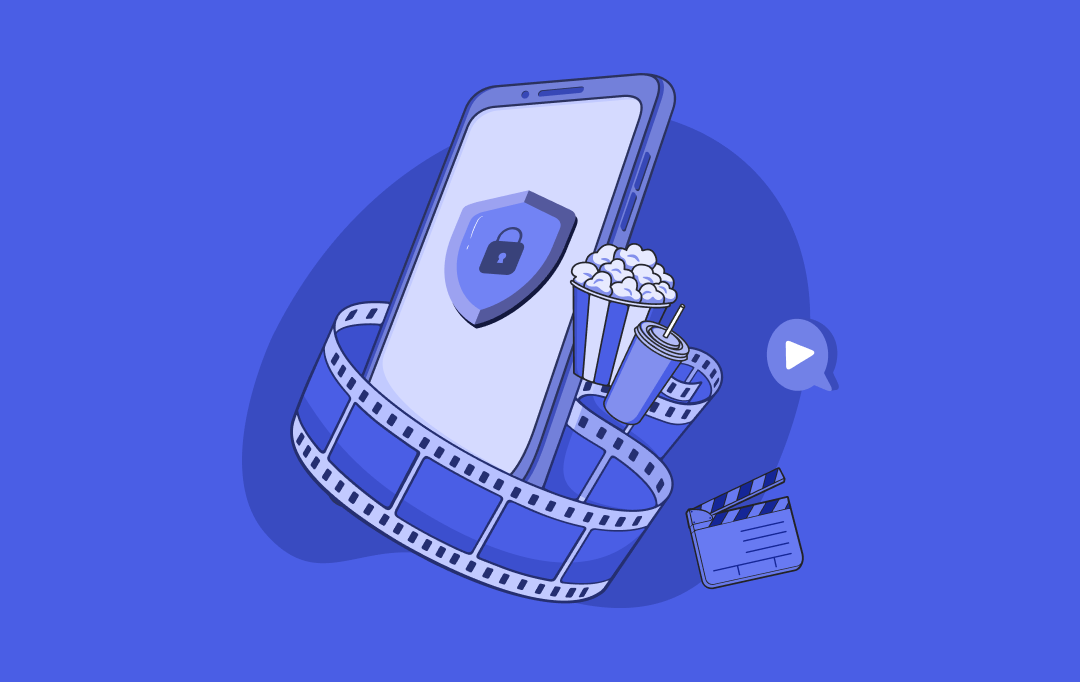
Top 10 OTT App Security Risks and How to Block Them
As the demand for on-demand content continues to surge, OTT platforms handle more than just high traffic; they manage vast amounts of user data, digital assets, and third-party integrations with significant security implications. What was once considered a niche service is now a critical infrastructure layer in the global media and entertainment landscape, making it…
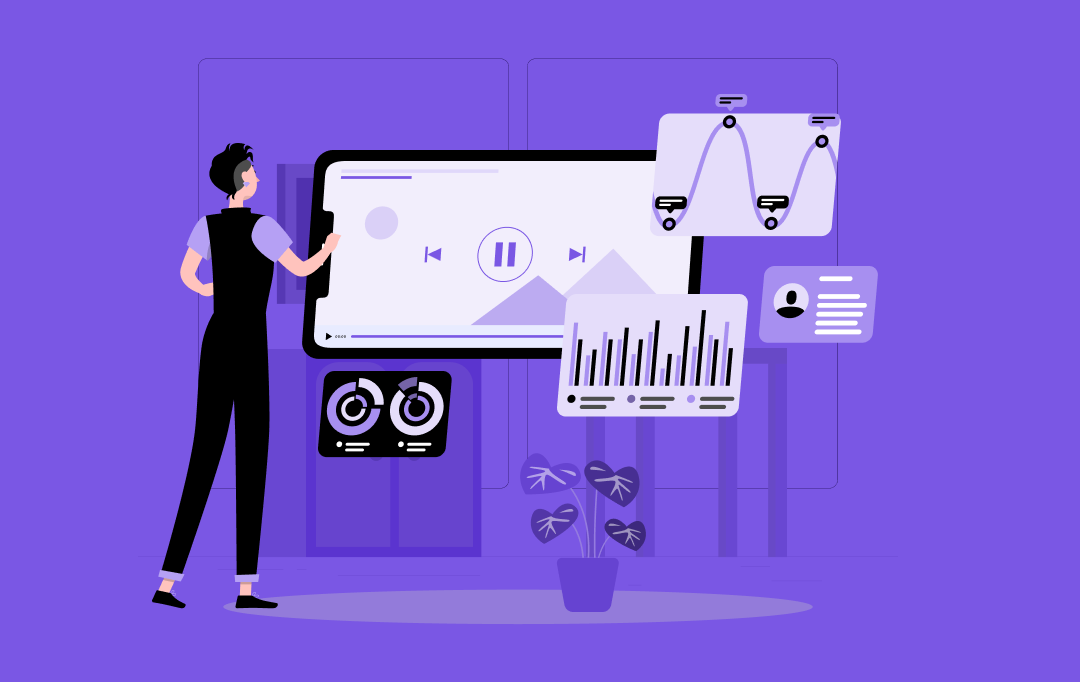
10 Reasons OTT Data Analytics is Critical for Your Business
Key takeaways: OTT analytics are crucial for understanding user behavior and optimizing content strategies. Real-time data enables businesses to make informed decisions promptly. Integrating analytics into OTT platforms can enhance user experience and drive revenue. Appinventiv develops and deploys advanced analytics solutions tailored to your unique business needs. Launching an OTT platform today is easier…

How Much Does it Cost to Build an OTT App Like Stan?
As our lives become increasingly intertwined with technology, the rise of Over-the-Top (OTT) apps has become an essential facet of modern entertainment. The media consumption landscape is evolving, with digitalization fundamentally altering how we engage with content. Traditional television gives way to a more flexible model where viewers can watch anything, anytime, and on any…
